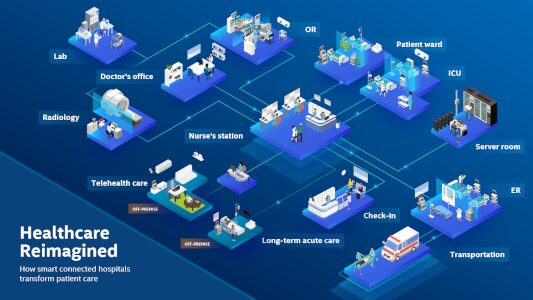4 Strategic Considerations for Digital Hospital Transformation

Digital Hospitals harness AI and analytics within their connected infrastructure to turn data from devices and workflows into actionable insights. Operating Rooms (ORs), intensive care units (ICUs), emergency rooms (ERs), and laboratories of a bustling hospital, along with all patient and provider touchpoints, are rich with data. This readily available information can be captured, analyzed, and leveraged in a digital hospital. Implementing AI, IoT, edge computing, and other innovations through digital transformation (DX) efforts can help hospital executive teams improve patient and provider experiences.A digital hospital is one of the most demanding DX-proving grounds imaginable: it is a perfect storm of need, opportunity, and risk that typically plays out against a daily backdrop of life-or-death stakes. These institutions are integrating new tools such as AI imaging, edge computing, and lab automation to provide more efficient and personalized patient care. It must all be done to the exacting standards of regulatory requirements, insurance coding, and clinicians working in high-volume, high-pressure, and high-cost environments.
Make faster decisions with community advice
- AI Gets Better At Writing Patient Histories When Physicians Engineer The Prompts
- New Study Evaluates Virtual Reality to Reduce Scanxiety in Brain Tumor Patients
- Revolutionizing Healthcare: Harnessing the Power of IoT Solutions for Improved Patient Outcomes
- Carrum Health Raises $45 Million Series B to Expand Cancer Care Offerings and Launch New Service Lines
- Ethical Guardrails Are Essential To Making Generative AI Work For Healthcare
Deploy this technology today
-
nQ Cortex
Matched with Medical Subject Headings (MeSH): Biomedical Technology, Healthcare IT News: Artificial Intelligence
- NLabviva Platform
- Labviva Platform
- AI Dermatologist Platform
- Armis Platform for Healthcare

